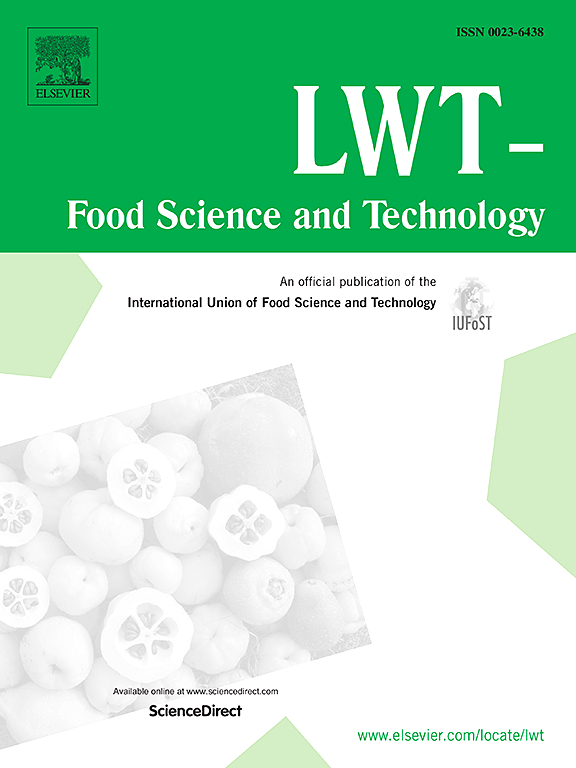The natural product 3-Mercaptopropionic acid is a highly effective browning inhibitor by directly capturing polyphenol oxidase activity
IF 6
1区 农林科学
Q1 FOOD SCIENCE & TECHNOLOGY
引用次数: 0
Abstract
Polyphenol oxidase (PPO) is a key enzyme responsible for enzymatic browning, which significantly affects the quality and marketability of fresh-cut fruits and vegetables. 3-Mercaptopropionic acid (3-MPA) has been identified as a promising natural compound with potential anti-browning properties. This study investigated the efficacy of 3-MPA as an anti-browning agent for fresh-cut potatoes and tobacco leaf pulp. Various concentrations of 3-MPA were evaluated, with 50 mg/L identified as the optimal treatment level for inhibiting enzymatic browning while maintaining sensory quality. 3-MPA treatment enhanced antioxidant capacity, reduced PPO activity, and mitigated quinone formation in potato samples. Molecular docking simulations and dynamics analyses revealed that 3-MPA competitively binds to PPO's active site, forming a stable enzyme-inhibitor complex that effectively blocks substrate access. The inhibitory mechanism involves both direct enzyme interaction and pH reduction. 3-MPA demonstrated superior potency to conventional anti-browning agents, requiring lower concentrations for comparable effects. These findings provide insights into 3-MPA's molecular mechanism of action and establish its potential as a promising anti-browning additive for food preservation applications.
求助全文
约1分钟内获得全文
求助全文
来源期刊

LWT - Food Science and Technology
工程技术-食品科技
CiteScore
11.80
自引率
6.70%
发文量
1724
审稿时长
65 days
期刊介绍:
LWT - Food Science and Technology is an international journal that publishes innovative papers in the fields of food chemistry, biochemistry, microbiology, technology and nutrition. The work described should be innovative either in the approach or in the methods used. The significance of the results either for the science community or for the food industry must also be specified. Contributions written in English are welcomed in the form of review articles, short reviews, research papers, and research notes. Papers featuring animal trials and cell cultures are outside the scope of the journal and will not be considered for publication.
 求助内容:
求助内容: 应助结果提醒方式:
应助结果提醒方式:


